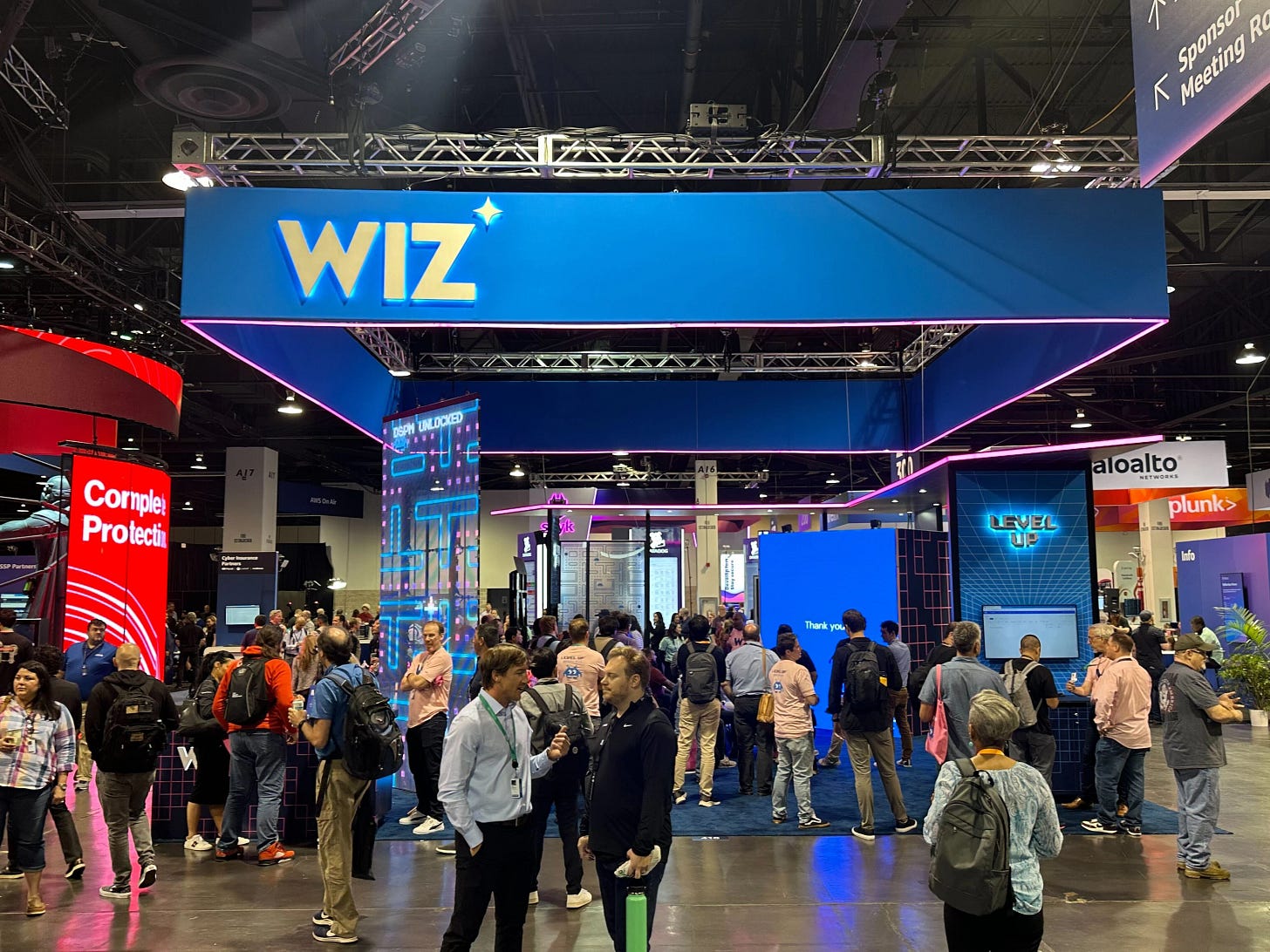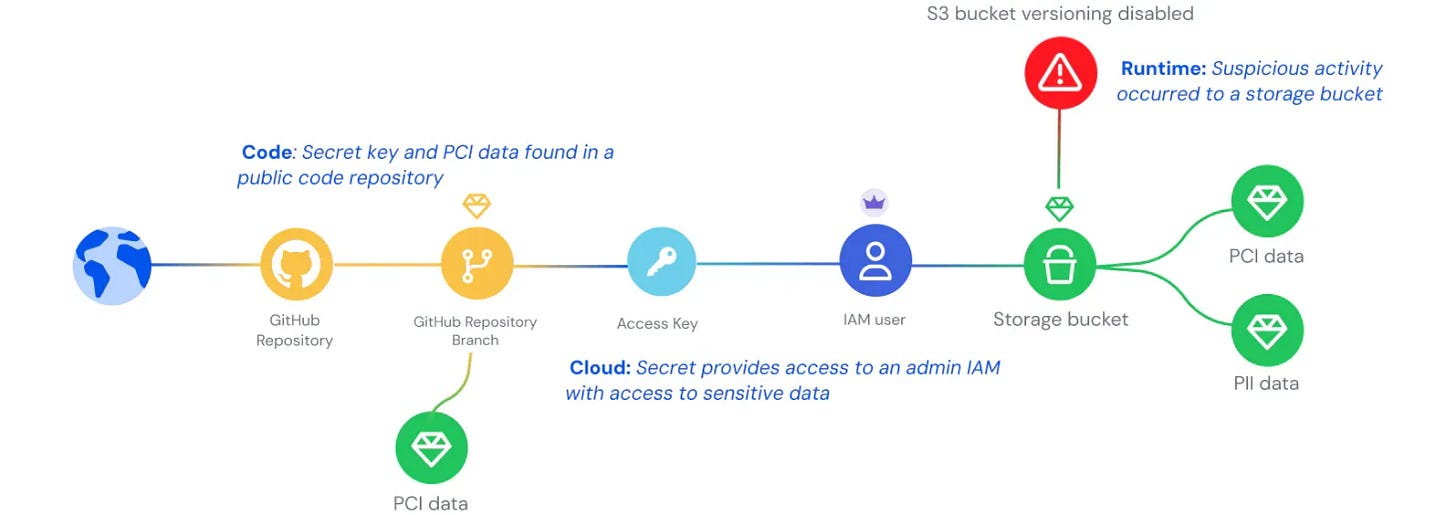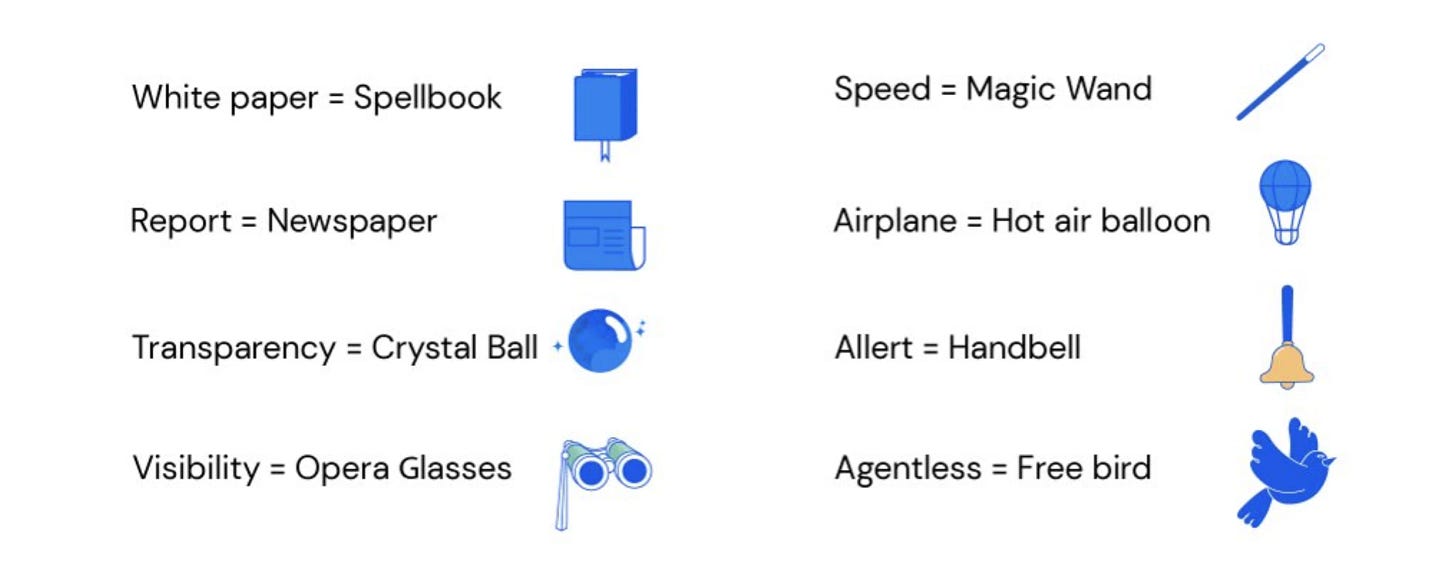Wiz’s $32B GTM Playbook: Unpacking the Formula (Part I)
From Finding PMF to Nailing Branding
Welcome to The Cybersecurity Pulse (TCP)! I'm Darwin Salazar, Head of Growth and Marketing at Monad and former Detection Engineer in big tech. Each week, I dig through all the major headlines to bring you the latest security product innovation and industry news. Subscribe below for weekly updates! 📧
Google just acquired Wiz for $32B, 5 years after it’s founding. If you haven’t been watching closely, you may be asking yourself “How on earth did they achieve that?”. It’s an unprecedented, historic feat that will be talked about and studied for decades.
Sure they had many factors working in their favor from inception, but to me, the x-factor (aka “Secret Sauce”), was their Go-To-Market (GTM) strategy. I’d argue that they’ve had a greater GTM run than any other B2B company in recent history, except for maybe Salesforce.
As a former competitor to Wiz, a current tech partner through Monad, a market analyst with TCP, and a friend to several Wizards, I've had an up close look at their meteoric rise.
In this series, I’ll try to decode the exact growth and marketing tactics behind Wiz's historic exit. In this installment, we’ll dissect their journey from finding Product-Market Fit (PMF) to how they nailed branding that set them apart in a hyper competitive segment with well-established incumbents.
Curious about what growth + marketing hacks Wiz employed and how you can apply them to your own strategy? This series should act as some sort of guide for that!
Interested in sponsoring an issue of The Cybersecurity Pulse?
This includes reaching an audience of ~6,000, ranging from CISOs, Security Engineers, and world-class investors across 100+ countries!
Perspective
Wiz achieved $100M in annual recurring revenue (ARR) in August 2022, just 18 months after launch, making it the fastest software company to reach this milestone at the time. By May 2023, ARR reached $200M, and by February 2024, it was $350M, with a target of $1B ARR and a future Initial Public Offering (IPO).
In July 2024, rumors swirled that Google had extended a $23B buyout offer which was confirmed after Assaf sent a company-wide email stating they’ve turned the offer down to pursue an IPO. Their historic ascent ultimately culminated in a $32B acquisition by Google on March 17th, 2025.
Side note: Deal is pending regulatory scrutiny and approval. EU + UK government review led to the Figma x Adobe $20B deal falling through. Market and political conditions are different in 2025 + the dynamics of this deal are more synergistic/constructive than the Figma deal so 🤷🏽♂️
Time Machine
Let’s rewind back to 2020 before Wiz was founded. Cloud Security Posture Management (CSPM) had been a product category for 5+ years. The term ‘CNAPP’ didn’t exist. Companies like Palo Alto Networks, Aqua, Sysdig, and Checkpoint controlled the cloud security space.
So how did Wiz come in, kick the doors down, and capture enough market share to go from 0 to $32B in just 5 years? How did they dethrone incumbents and become the security darling of the world?
Of course, in retrospect, Wiz had many key ingredients working in their favor:
Strong, proven founding team (Adallom founders + Microsoft Cloud Security Leadership)
Great, sticky product
Solving deeply felt pain point(s)
Timing (founded just as the world goes remote due to COVID-19 + cloud boom)
Legendary investors + network effects (Sequoia Capital, Cyberstarts, Index Ventures etc.)
Lots of early funding ($480M+ within a year of emerging from stealth 🤯)
Relentless execution
However, they weren’t first to market and they didn’t necessarily build a magic shield to stop all cyber attacks forever. While many of the stars seemingly aligned for Wiz, it wasn’t just luck or perfect timing.
So, how did they do it?
🪄Finding PMF
None of this happens without PMF, so let’s start there. What made Wiz different in a sea of 30+ cloud security tools is that they transformed a fragmented cloud security market of point solutions (CSPM, CWPP, CIEM, IaC scanning etc.) into a unified, user-friendly platform called Cloud-Native Application Protection Platform (CNAPP). A term they coined and championed which eventually became a new product category.
Their unified platform paired with their agentless approach made it super simple and fast to get value. Most cloud workload protection platforms required deploying and maintaining agents on workloads which added additional overhead. Wiz’s agentless approach removed this friction. Wiz also placed heavy emphasis on contextualization of security issues which led to their highly successful Wiz Security Graph and ‘Toxic Combinations’ visualizations.
This unified and contextualized solution allowed security teams to easily onboard, prioritize the most important stuff, and gain a holistic view of potential impact with much less overhead than traditional cloud security tools.
This fresh approach is what landed them PMF. Once they had PMF, they tripled down on sales and marketing.
Dig deeper → This Sequoia Capital post offers a deeper look at their PMF journey.
PMF Journey from CMO’s Perspective
This podcast with Lenny Rachitsky (🐐) and Raaz Herzberg, CMO at Wiz, dives into their early days and is an inside look into their journey to PMF.
Key takeaways below:
Stealth Days - Wiz was initially founded as “Beyond Networks” with the intent to build a network security product. 10-15 calls a day (🤯) with security leaders led to realization that network security was not a burning pain point.
The founder’s and investor’s deep networks certainly played a key role in the 10-15 calls a day.
The Magical “Pull” ✨ - A strong indicator that you’re headed in the right direction is when feedback goes from “Cool idea, not sure if we have a need for it right now” to “When can we start a PoV/PoC?”.
Early Sales - Founding team closed ‘a couple million’ in ARR before bringing on their first salesperson.
Major lesson here is that if the founding team can’t sell the product repeatably end-to-end, it’s wishful thinking that bringing in a salesperson would be able to crack the PMF code for you.
Product messaging - Must be crystal clear. Abstract it to a level where beginners or outsiders can understand the problem you’re solving and how. Ditch the acronyms. Have a ‘dummy explanation’.
CMO Success Factors
Trust from founding team
Deep connection to the product (First-hand experience of the problem being solved goes a long way)
Deep connection to the market (Helps w/ positioning, differentiating etc.)
Experimentation - “Let’s try everything and try to make noise” approach played a huge role in their marketing success.
Marketing is unlike product or engineering where decisions can directly negatively impact the user experience.
Unless you’re doing cringe marketing like ambulance chasing, let your creativity run wild with campaigns and channels. Worst that can happen is the post or campaign flops and you move onto the next one.
Field Marketing - Raaz’s goal for big conferences was to make the Wiz booth as weird as possible in order to stand out from the rest. This led to a 5x increase in booth traffic compared to previous years.
This post from Roy Katz, their Head of Brand, breaks down their methodology for their booth approach and includes a checklist other companies could reuse to nail their booth game.
Side note: Lenny's Newsletter and podcast are goldmines of resources for product builders 👑
Dig Deeper: This OpenView write-up covers how covers how Wiz became synonymous with the term CNAPP (Cloud-native Application Protection Platform) which is what made them break away from the rest of the cloud security providers.
🔨 Nailing Branding
How do you stand out as the new kid on the block in a hyper competitive space? Branding plays a massive role in that, and it bleeds through many key facets of the GTM machine. Branding is the identity of the company and it has a TON to do with human psychology.
Wiz’s branding starts with it’s name, short for “Wizard” and indicating magic. In an industry where fear, loss, and urgency are top of their customer’s mind. Wiz designed a fun, light-hearted brand with magic as the central theme. What comes to your mind when you think about magic?
To me, it’s defying universal laws. Evoking a sense of wonder and of anything being possible which is key for cultivating an innovative culture and product. From their logo, to their color palettes (royal blue, white, pink hues), to their messaging, Wiz chose optimism over fear.
This one decision to choose “Magic” as the center of it’s branding shows that Wiz understands their audience/ICP. It set the tone for their culture, GTM machine, how customers interact with them, product UX/UI and everything in between.
This blog post written by Roy Katz peels back the curtains on the How and Why of their branding.
Key Branding Takeaways
Emotional Connection First – Be extremely thoughtful in the feelings you want your brand to evoke. Prioritize inspiring hope over fear.
Cybersecurity often uses fear to drive urgency. This can overwhelm customers. Wiz’s "magic" and optimism show you can address threats while empowering customers, building trust through confidence, not scare tactics or ambulance chasing.
Color Palette – Use colors and designs to signal reliability in a high-stakes industry.
Wiz’s blue palette symbolizes trust, loyalty, and wisdom, paired with clean, intuitive design. Choose colors that reassure customers and ensure your product UX feels as reliable as your brand.
Unique Brand Theme – Great brands have themes.
Wiz’s "magic" theme turns a technical product into an approachable experience. Pick a theme that aligns with your values, then weave it into messaging, UX, and every touchpoint for a cohesive identity.
Playful Yet Professional – Wiz’s branding is very playful and indicates that the company likes to have fun. This helped build customer and community affinity for the brand.
Wiz uses pink accents and magical imagery but grounds it with blue and clean design.
Branding Consistency - Wiz ensured consistency across website, product UI, conference booths, swag and everything in between.
Dig Deeper
The Magic of Branding: Creating an Optimistic Identity for a Security Product - Roy Katz
“Conquer Your Rebrand” by Bill Kenney, Founder + CEO at Focus Lab, is an A-Z masterclass on branding.
Wiz Brand team Instagram: @wiz.style
Conclusion
There is so much to be learned from Wiz’s acquisition. It’s a masterclass in category creation and proving that a bold GTM strategy, a sticky product, and a magical brand can turn a startup into an industry darling (and $32B) in just five years.
Success leaves clues. How can the rest of us apply Wiz’s playbook to redefine our own respective categories?
Stay tuned for the next installment. We’re just warming up! ~
For More
There’s a ton of fantastic analysis dissecting the deal end-to-end and what it may mean for our industry. Below are a few of my favorites:








Nice write up Darwin - agreed the wining combo is the PMF, Messaging and Branding!
Great breakdown! Looking forward to the next one.